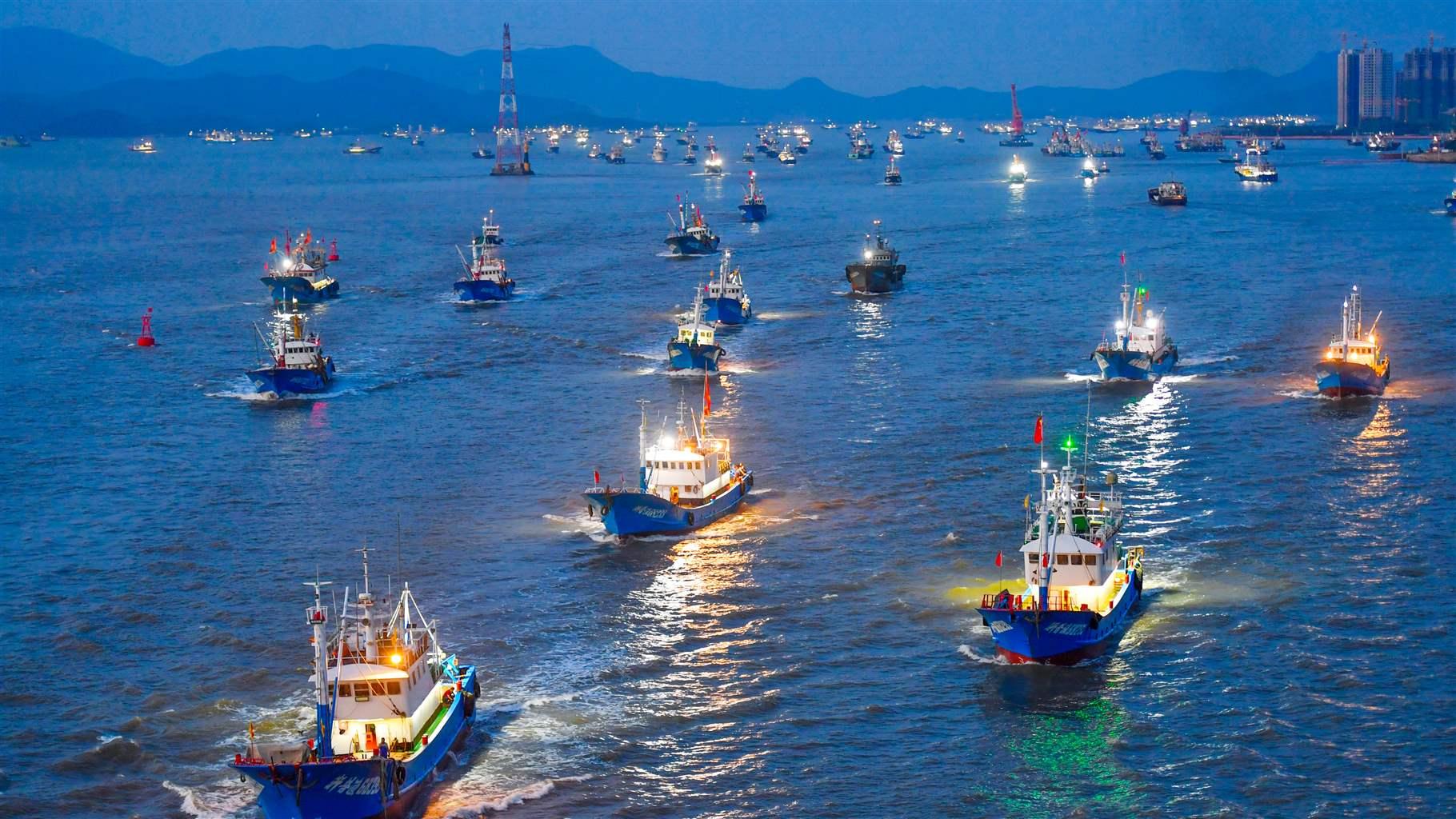New Research Shows the 5 Governments Funding Most Distant-Water Fishing—and the Harm It Causes
To help the ocean and domestic fleets, World Trade Organization members should end harmful subsidies

Editor’s note: This article was updated March 11, 2022, to clarify that 54% of high seas fishing grounds would not be profitable without harmful subsidies.
The 70 boats from Papua New Guinea that fished for tuna in the island nation’s waters in 2018 weren’t the only ones there: More than 150 additional fishing vessels, all from other countries, streamed into Papua New Guinea’s exclusive economic zone (EEZ), outcompeting many of the country’s domestic fishers and putting them at an economic disadvantage.
The foreign fleets were powered by an estimated $251 million in harmful subsidies, allocated to them by their national governments, according to new research funded by The Pew Charitable Trusts and developed by leading fisheries economists at the University of California, Santa Barbara. The research offers an atlas of fishing activity that shows the estimated value of harmful subsidies that enable fleets to fish well beyond their home countries’ waters, including on the high seas.
Harmful subsidies to foreign distant-water fleets support more fishing in the waters of Papua New Guinea, which boasts an extensive and valuable fisheries sector, than anywhere else in the world. Further, much of the activity is concentrated near Papua New Guinea’s coasts, where local fishers’ families and communities depend on fisheries for their livelihoods.
But the problem is not unique to Papua New Guinea. Other developing countries often face the brunt of subsidized distant-water fishing effort. This is the result of a distressingly familiar pattern: After overfishing their own waters, governments with strong economies, such as China and the European Union (EU), provide subsidies for their fleets to travel far afield to fish in the waters of developing nations. Of the five EEZs around the world that receive the most heavily subsidized distant-water fishing pressure, three are developing countries, and the top two—Papua New Guinea and Micronesia—are designated Small Island Developing States by the United Nations.
Even though science finds that our global ocean is overfished, governments will still spend more than $22 billion each year in harmful subsidies to their fishing sectors. Subsidies become harmful when they enhance fishing capabilities and allow vessels to travel farther, stay at sea longer and catch more than they could normally afford to, depleting fish populations beyond sustainable levels. Further, this subsidy-enabled activity can exacerbate inequity for those who are already disadvantaged in the fishing sector.
Distant-water fleets tend to benefit far more from these subsidies than domestic fleets do. The distant-water fleets often set out to target highly valuable species on the high seas—which itself can contribute to overfishing—but then often encroach into EEZs, where they take catch that might otherwise be available to domestic fleets. For example, the research notes that more than $630 million in harmful fisheries subsidies is allocated from 24 flag States fishing the South-Eastern Pacific Ocean, where the top four nations—China, Japan, Spain and Korea—were responsible for 93.5% (over $589 million) of all subsidized effort.
In addition, the new subsidy atlas reveals a close correlation between the top harmful subsidizers and the top five governments responsible for the most subsidized distant water fleets. In 2018, China, the EU, Japan, Korea and Taiwan spent $1.5 billion in harmful subsidies and 2 billion kilowatt hours—the United Nation’s official measure of fishing effort—in other country’s waters. That’s more expenditure and effort than the remaining 130 distant-water fishing nations around the world combined spent over the same period.
World Trade Organization (WTO) members can put a stop to this inequity. Studies show that, without subsidies, much of the distant-water activity is economically unfeasible. For example, research in 2018 found that 54% of high seas fishing grounds—areas outside the jurisdiction of individual countries—would not be profitable without harmful subsidies. WTO members, which set policies on such payments, could vote to end harmful fisheries subsidies—and in fact were called upon to do so in the 2015 United Nations Sustainable Development Goals (Goal 14, Target 6). Rather than continuing the status quo, an ambitious multilateral agreement that triggers subsidy reform could help level the playing field for fishers and help fish populations rebound.
Following more than two decades of negotiations, trade ministers from around the world will meet 30 November to 3 December at the 12th WTO Ministerial Conference in Geneva, Switzerland. Together, WTO member governments can and should do the right thing by ending harmful fisheries subsidies. The livelihoods of fishers and coastal communities, such as those in Papua New Guinea and around the world, are increasingly threatened as fish populations decline. Action to curb harmful subsidies to distant-water fishing activity is critical to the overall effectiveness of the final WTO agreement.
Isabel Jarrett is a manager and Reyna Gilbert is a principal associate with The Pew Charitable Trusts’ reducing harmful fisheries subsidies project.












